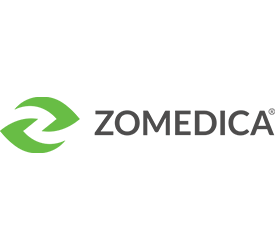Diagnostic Testing and Monitoring
The diagnosis relies on confirming cortisol deficiency by means of an ACTHST. A sodium-to-potassium ratio <27 is suggestive, although sodium and/or potassium concentrations are within the reference range in nearly one in four cases of HA, and many other disorders can impact the sodium-to-potassium ratio.49,51 Aldosterone measurement is available through multiple laboratories and can be used to further determine adrenal function if appropriate.52
The finding of a baseline or “resting” serum cortisol >2 mcg/dL rules out HA with nearly 100% confidence, assuming that the patient has not received exogenous glucocorticoids known to cross-react with the cortisol assay (such as prednisone).53 However, most dogs with a baseline cortisol <2 mcg/dL do not in fact have hypoadrenocorticism, so this finding is not sufficient to establish the diagnosis. The diagnosis is confirmed by a post-ACTH stimulation cortisol value <2 mcg/dL or below the laboratory-specific diagnostic cutoffs (see box, ACTH Stimulation Technique). Reference ranges derived from healthy pets are not the same as diagnostic cutoffs, which are developed by sampling dogs with HA. Measurement of endogenous ACTH, specifically the cortisol-to-endogenous ACTH ratio, or a UCCR are promising sensitive and specific tests for dogs with primary adrenocortical injury, although this test is not yet routinely performed.54–58
ACTH Stimulation Technique
- Collect a baseline serum cortisol sample. The patient may need to be fasted to avoid lipemia.
- Inject cosyntropin (5 mcg/kg intramuscularly or IV up to 250 mcg per dog) and collect a second serum sample 1 hr later.
- A 1 mcg/kg dose of cosyntropin has been shown equivalent to a 5 mcg/kg dose of cosyntropin for most dogs suspected of HA.63
- A 1 mcg/kg dose of cosyntropin has been shown appropriate for monitoring of dogs with Cushing’s syndrome being treated with trilostane or mitotane but is not reliable for the diagnosis of Cushing’s syndrome.45
- The absorption of compounded ACTH-depot (“gel”) may be delayed from the intramuscular space. Thus, samples for cortisol should be collected at both 1 and 2 hr after injection.
- The cost of the cosyntropin can be decreased by using lower doses when appropriate and by freezing the reconstituted product in small aliquots.64
- Using an aseptic technique, reconstitute the ACTH solution for injection as instructed on the package (1 mL NaCl for a 250 mcg/mL solution).
- With a tuberculin syringe, draw up 0.1–0.2 mL aliquots. Draw up an additional 0.1 mL of air to provide space for expansion during freezing. Store at 20°C for up to 6 mo.
- At the time of use, thaw one or more syringes in the palm of a gloved hand. The solution will quickly liquefy. Expel the small air bubble from the hub before use and double-check drug volume.
- Once thawed, use or discard the solution. Do not refreeze.
TABLE 5
Diseases with a Similar Clinical Presentation to Hypoadrenocorticism
Download PDF
| Conditions with similar clinical presentation to classic HA |
|
| Diseases with a similar clinical presentation to atypical HA |
|
HA, hypoadrenocorticism.
TABLE 6
Conditions That Biochemically Resemble Hypoadrenocorticism (Pseudo-Addisonian Conditions)
Download PDF
| Whipworms |
| Third spacing of fluids |
| Chronic gastrointestinal disease |
| Renal failure |
| Hepatic failure |
| Reperfusion injury |
| Acidosis |
| Artifact (thrombocytosis, hemolysis) |








